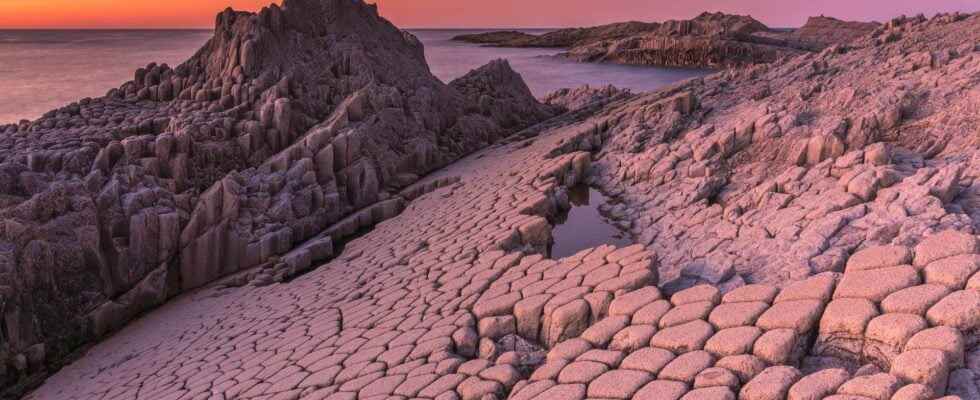The term “basaltic” refers to any mineral formation consisting mainly of basalt or having the composition of basalt. We speak for example of basaltic flows, basaltic effusions, basaltic plateaus, basaltic organs …
Material of volcanic origin
This term implies a volcanic origin, because basalt is a rock formed by rapid cooling. basic composition lavas. Basalts are composed of 50% plagioclases, 25 to 40% pyroxenes, 10 to 25% ofolivine and a small percentage of magnetite. Those minerals give a color rather dark to any basaltic material. The texture is generally fine, with very small crystals (micro-grained appearance). Basaltic materials are therefore generally characterized by a dark paste in which a few small crystals can be identified. They may also contain small cavities which are the bubbles of gas trapped during cooling.
The puddles basaltics are the result of the partial melting of a coat of lherzolitic composition (primitive mantle). Currently, the large basaltic regions are located at the level of traps of Siberia and the Deccan, as well as the Columbia to United States. Basaltic effusions also characterize volcanism occurring at the level of ocean ridges : basalt thus forms the surface layer of the oceanic crust and is therefore one of its essential components.
The Icelandic volcanoes, which are located at the level of the mid-Atlantic ridge, produce large quantities of basaltic lava. In France, some volcanoes from the Massif Central have also generated basalt flows.
Various forms and distribution in the Solar System
These rocks are also found on other planets, such as the Moon or Mars, but also Mercury and Venus where from large volcanic systems have been identified. The famous lunar “seas”, dark expanses visible to theeye naked since Earth, are actually large areas of basaltic material.
Basaltic materials can have a wide variety of shapes, which mainly depend on the cooling conditions of the lava. At the bottom of the ocean, we often find so-called cushion basalts (pillow-basalts), which cool very quickly on contact with cold seawater.
The basalt columns, impressive formations of hexagonal-cut basalt columns, result from cooling by thermal contraction due to a difference in speed cooling between the surface of the casting and its base.
You will also be interested
[EN VIDÉO] Geology of volcanic systems – an invitation to travel Interviews dating from 2009 with Georges Boudon, physicist at the IPGP, and members of the team studying the functioning of volcanoes, from the generation of magmas to eruptions. The purpose of the IPGP films is to open the doors to laboratories and support scientists in the world of geosciences. This film is part of a series of 14 short format films which are an invitation to a journey from the cosmos to the center of the Earth. Design & production: Medi @ terre, IPGP – 2009
Interested in what you just read?
.
fs12
